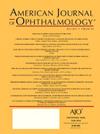Size Matters
IF 4.1
1区 医学
Q1 OPHTHALMOLOGY
引用次数: 0
Abstract
PURPOSE
To describe the ideal size of a laser iridotomy and to discuss its importance.
DESIGN
Perspective.
METHODS
Articles in ophthalmology literature on this topic were reviewed, and commentary is provided based on the authors’ experiences.
RESULTS
An ideal laser iridotomy size is 200 µm or larger, especially in eyes with uveitis. The final size of an iridotomy must be confirmed after the effects of the pilocarpine has worn off and the pupil is not being constricted by light. A location of the iridotomy furthest from the lid margin may reduce the chances of dysphotopsias and thus allow for an adequate-sized iridotomy.
CONCLUSIONS
An iridotomy of an ideal size is needed to reduce the pressure differential on both sides of the iris so as to be effective in eliminating pupillary block.
规模很重要。
目的:探讨激光虹膜切开术的理想尺寸及其重要性。设计:视角。方法:查阅眼科相关文献,结合笔者的体会进行评述。结果:激光虹膜切开术的理想尺寸为200微米及以上,特别是对葡萄膜炎患者。虹膜切开术的最终大小必须在匹罗卡品的作用消失,瞳孔没有因光而收缩后确认。虹膜切开术的位置离眼睑边缘最远,可以减少瞳孔发育不全的机会,因此可以进行适当大小的虹膜切开术。结论:需要理想尺寸的虹膜切开术,以减小虹膜两侧的压差,从而有效消除瞳孔阻塞。
本文章由计算机程序翻译,如有差异,请以英文原文为准。
求助全文
约1分钟内获得全文
求助全文
来源期刊
CiteScore
9.20
自引率
7.10%
发文量
406
审稿时长
36 days
期刊介绍:
The American Journal of Ophthalmology is a peer-reviewed, scientific publication that welcomes the submission of original, previously unpublished manuscripts directed to ophthalmologists and visual science specialists describing clinical investigations, clinical observations, and clinically relevant laboratory investigations. Published monthly since 1884, the full text of the American Journal of Ophthalmology and supplementary material are also presented online at www.AJO.com and on ScienceDirect.
The American Journal of Ophthalmology publishes Full-Length Articles, Perspectives, Editorials, Correspondences, Books Reports and Announcements. Brief Reports and Case Reports are no longer published. We recommend submitting Brief Reports and Case Reports to our companion publication, the American Journal of Ophthalmology Case Reports.
Manuscripts are accepted with the understanding that they have not been and will not be published elsewhere substantially in any format, and that there are no ethical problems with the content or data collection. Authors may be requested to produce the data upon which the manuscript is based and to answer expeditiously any questions about the manuscript or its authors.

 求助内容:
求助内容: 应助结果提醒方式:
应助结果提醒方式:


